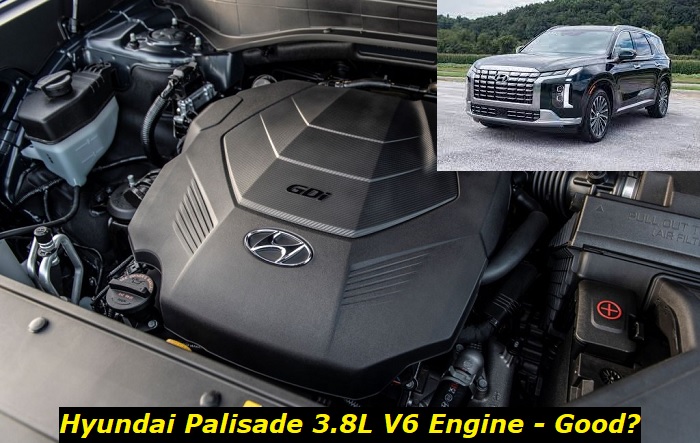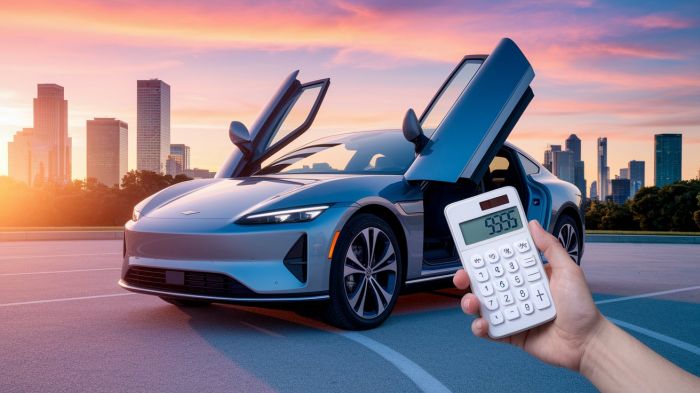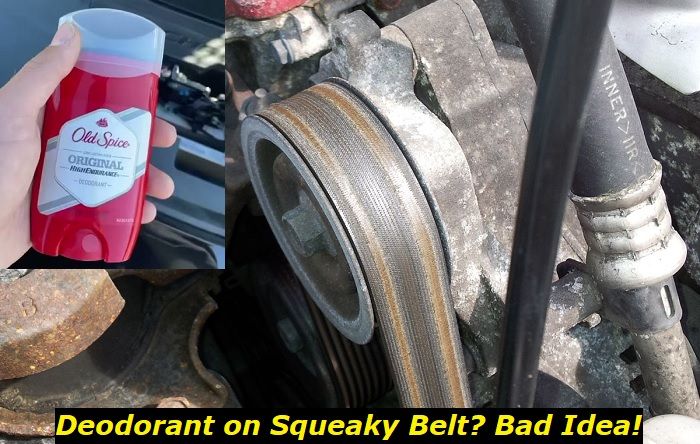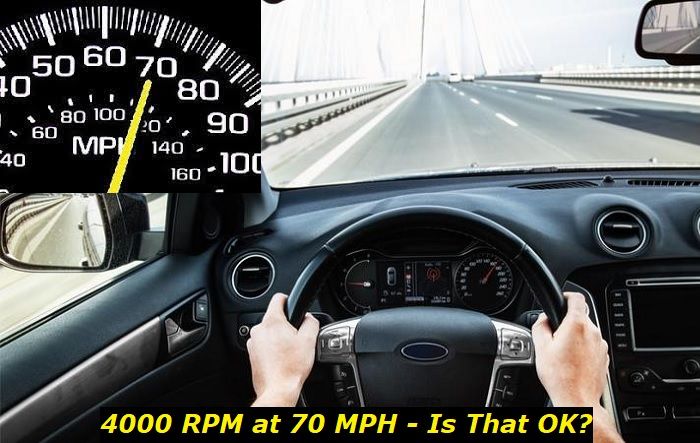The Hyundai Palisade is selling surprisingly well in the US. It sold over 80,000 SUVs during the previous year and is going to sell even more this year. This is one of the last modern SUVs with a big V6 engine available. And the engine is exactly what I'm going to talk about today. The facelifted Palisade boasts its engine as one of the key advantages. But is it really so?
The 3.8L V6 engine is the only option for the Palisade in the US. In this article, I will tell you more about its engineering and some features that are worth knowing before buying the vehicle. Also, I will cover the common problems that are expected by professionals to happen with this engine.

Key facts and my opinion about the engine
- Production years: 2018-now
- Average lifespan of G6DN: 200,000-220,000 miles
- Fuel supply type: direct injection
- Power range: 290-295 hp
- Fuel efficiency: average
- Engine block material: aluminum
- Engine reliability score: medium
- The most common problems: carbon buildup on intake valves, engine is afraid of overheating, potentially weak timing chains, no lifters.
Facts you should know about the Hyundai Palisade 3.8L V6 engine
This engine is pretty new - it was engineered in 2018 specially for the Hyundai Palisade and the Kia Telluride. It's still used exclusively in these models. In the US, this is the only option for the engine for the Palisade. But in other countries, the vehicle may come with a 3.5L MPI engine or with a 2.2L diesel powerplant.
The engine looks really good in comparison with the super-small-displacement turbo units that are found under the hood of many competitors of this model. I personally find it quite a good choice even though I know a lot about its potential problems. The list of those problems is still way shorter than for other cars in this class.
So, here's what you should know about the engine:
- this is the V6 G6DN engine with 3.8 liters of displacement and it offers 291 horsepower and 262 lb-ft of torque - not mind-blowing figures, I should say;
- the engine is all-aluminum, it's the Atkinson cycle unit with the idle-stop-and-go (ISG) technology;
- it offers direct injection with its pros and cons and also a dual variable valve timing system (on both intake and exhaust camshafts);
- it's not turbocharged and what surprises me pretty much, it has no hydraulic lifters and will require valve adjustment regularly;
- the cams are driven by chain, Hyundai says the chain is pretty tough and can last as long as the engine, but Hyundai has a pretty bad reputation in this sphere;
- the only available transmission is the 8-speed automatic unit - pretty good at first sight, nothing to worry about, it's Hyundai's A8LF2 transmission;
- the engine offers 26 MPG on highways and about 19 MPG in the city, but you will likely get less pleasant gas mileage in real life.
So, the engine doesn't look bad at first sight. It's really big and tough and I even got used to all those small turbocharged mini-engines that car manufacturers now persistently impose in their big SUVs. So, there is just a bunch of vehicles that the Palisade will be actually competing with for buyers like me.
Gas mileage will be the issue for someone. Especially in the era of unstable gas prices and the unclear future of oil-based fuels in general.
How long will the Palisade's engine last?
Well, the 3.8L V6 is pretty new and it's too early to talk seriously about the longevity of this engine. Even those units that have been used like crazy still have less than 100K miles on them. But my wild guess is that these engines will easily last over 200,000 miles and even much more than that if they are maintained well.
Of course, to hit that mileage, you will need to understand the weak sides and common issues with the engine to avoid the problems. Also, it's extremely important to control the quality of lubricants and filters that are used at regular maintenance. Bad oil will quickly kill the engine leading to head problems due to a pretty tangled dual CVVT system.
Also, bad lubrication will quickly kill the chain tensioner and can actually lead to fatal engine damage earlier than it hits 100K miles.
When it comes to the transmission, I don't see why it may fail earlier than 150,000 miles. Well, unless it will tow something heavier than it's designed for. Just change the transmission fluid on time and this unit is going to last for ages.
What are the common problems with the 3.8L V6 in the Palisade?
Again, there is still not much information about the common issue because the engine is very young. But looking at its technologies and also at rare reports from the repair shops and dealerships, I can put different parts of this puzzle into one picture. Unfortunately, the Palisade's engine is not flawless and it would be pretty strange to think of it in another way.
Here are some problems that will obviously be common issues with these engines:
1) GDI issues are still there
I don't know why but even some mechanics believe that new GDI engines don't form any significant carbon buildup on valves due to some changes in technologies. Yes, if the engine in question has the combined MPI plus GDI injection, this is possible. But the 3.8L V6 in your Palisade has clear direct injection and will form carbon buildup on valves that you will need to clean sometimes (or rather pay for cleaning).
Also, the GDI high-pressure fuel pump may throw a surprise at about 100K miles as it often happens with other Hyundai engines. This is a pretty expensive part that usually requires replacement when it fails.
2) A lot of heat may be the problem
The 3.8L engine forms a lot of heat when working. This is just the feature, not the problem. But the problem may come unexpectedly once there is something wrong with the cooling system. If the system fails even for several minutes (like the pump fails or the coolant level is low), the engine may be fatally damaged.
An overheated 3.8L V6 engine will most likely get stuck because of rod bearing issues or some other problem.
3) Timing chains
Analyzing the entire painful history of the timing chains in Hyundai engines, I can make a prediction that you will need to replace the chain kit at about 100K miles and then at 180,000 miles to avoid problems. Thankfully, the chain will rattle pretty loud when it's stretched fatally.
If the chain jumps or breaks, the chances are that it will lead to bent valves or even a cracked head (depending on the revs). Hyundai timing chains still look really thin and unreliable.
4) Oil consumption
It will burn some little amount of oil from the very start of its life (like almost any V6 engine). But this is like half a quart for 5K miles. Over time, however, oil consumption will inevitably grow. When it burns about a quart of oil every 1000 miles, you will need to invest some money in the engine to avoid catalytic converter failure and other issues.
The oil consumption grows because of the piston rings and valve seals degradation. While in some other engines, the fatal consumption starts at 200K miles and later, the Korean engine will show it at 100K miles or something like that. Some engines with proper care and maintenance will not require valve seals replacement or some other service. But some others will.
5) Gas consumption
This is not the most economical engine in the world and the official MPG ratings are overestimated clearly. If you are driving on highways, you will get more or less the claimed gas mileage But city driving with the V6 engine is going to cause some bad mood.
These engines love drinking gas and will do that in larger amounts than you expect, so be ready to pay for the privilege of owning the good big non-turbo machine.
How to prolong the life of the 3.8L V6 engine?
Here are several things you will want to do if you own a car with the G6DN engine under the hood:
- oil change (along with the filter) should be religious, don't miss the scheduled maintenance;
- any unusual sound or warning on the dash should immediately result in visiting the dealer or the good shop;
- timing chain control every 30,000 miles and replacement every 100,000 miles will greatly help;
- keep the coolant level high - any problem with cooling can lead to fatal damage;
- have the valves cleaned and adjusted about once every 40-50 thousand miles;
- don't tow anything heavier than 5,000 pounds - this is the maximum towing capacity of the Palisade.
Final thoughts
I really love the 3.8L V6 engine offered by Hyundai in its Palisade and also in the Kia Telluride. It looks really reliable and you will most likely have no single problem till it hits 50,000 miles. Then, everything depends on how well you maintain the engine. Adjusting and cleaning valves, listening to possible chain sounds, and using high-quality parts and fluids will help a lot.
But still, remember that this is not a flawless engine and it will anyway need some attention. If you own the Palisade or the Telluride, please write in the comments your opinion about this engine and its reliability!
About the authors
The CarAraC research team is composed of seasoned auto mechanics and automotive industry professionals, including individuals with advanced degrees and certifications in their field. Our team members boast prestigious credentials, reflecting their extensive knowledge and skills. These qualifications include: IMI: Institute of the Motor Industry, ASE-Certified Master Automobile Technicians; Coventry University, Graduate of MA in Automotive Journalism; Politecnico di Torino, Italy, MS Automotive Engineering; Ss. Cyril and Methodius University in Skopje, Mechanical University in Skopje; TOC Automotive College; DHA Suffa University, Department of Mechanical Engineering






Add comment